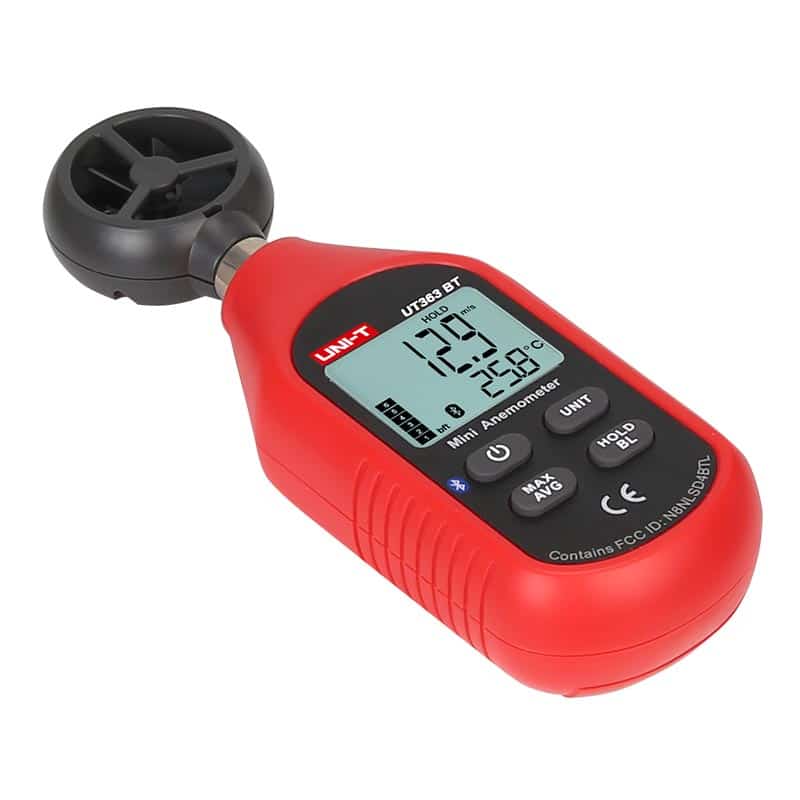Why an Anemometer is Necessary for Your Environmental Information Collection
Why an Anemometer is Necessary for Your Environmental Information Collection
Blog Article
Anemometers Revealed: Recognizing Their Importance in Ecological Tracking and Safety And Security Actions
The duty of anemometers in environmental monitoring and safety steps is frequently underestimated, yet their significance is undeniable. From weather forecasting to air travel safety and security, anemometers play an essential function in supplying precise data that notifies decision-making processes and improves overall security.
Background of Anemometers
The evolution of anemometers can be traced back to the ancient human beings where simple wind measuring tools were initial made use of. These very early wind dimension devices laid the structure for the development of much more innovative anemometers in time. Among the earliest recognized anemometers was the hemispherical mug anemometer invented by Leon Battista Alberti in the 15th century. This layout contained 4 hemispherical mugs that collected wind energy, giving a dimension of its strength based upon the speed of turning.
Over the years, improvements in technology led to the growth of more contemporary anemometers, consisting of ultrasonic anemometers and laser Doppler anemometers, using raised accuracy and performance in determining wind rate and direction. The history of anemometers showcases a remarkable journey of innovation and progress in the field of weather forecasting.
Kinds Of Anemometers
Throughout the field of meteorology, different kinds of anemometers have been established to properly gauge wind speed and instructions. One of the most usual type is the mug anemometer, which consists of 3 or 4 mugs installed on horizontal arms that turn with the wind. As the cups spin, the speed at which they turn is straight proportional to the wind rate. An additional widely made use of kind is the vane anemometer, which features a tail or fin that straightens itself with the wind direction. This alignment enables the tool to determine the wind direction. Sonic anemometers utilize ultrasonic signals to measure wind rate and direction properly. They are frequently made use of in research study applications because of their high accuracy. Hot-wire anemometers operate based on the concept that the cooling effect of wind on a warmed cable is proportional to the wind rate. These anemometers are appropriate for measuring low wind speeds with high precision. Each sort of anemometer has its toughness and is picked based on the details demands of the tracking job at hand.
Applications in Meteorology
Having talked about the various kinds of anemometers made use of in weather forecasting for gauging wind rate and instructions, it is necessary to discover their functional applications in the area. Anemometers play an important function in meteorology by providing real-time and precise data on wind conditions (anemometer). Meteorologists use anemometers to keep track of wind rate and direction to forecast climate patterns, concern cautions read the article for severe climate events like tornados, tornadoes, and hurricanes, and assess climatic conditions for aviation security
In meteorology, anemometers assist in understanding visit the site local and local wind patterns, which are crucial for forecasting climate adjustments and establishing climatic fads. These tools are additionally utilized in research study to examine microclimates, urban heat islands, and air pollution diffusion. In addition, anemometers are used in farming to enhance crop monitoring techniques, such as irrigation and chemical application, based upon wind problems.
Significance in Aeronautics Security
An indispensable facet of making certain air travel security depends on the thorough monitoring of wind conditions using anemometers. Anemometers play a critical role in air travel by offering real-time information on wind rate and direction, assisting pilots in making informed decisions throughout flight, liftoff, and touchdown. Solid and unpredictable winds can considerably affect aircraft procedures, making it necessary for aviation authorities to count on precise wind dimensions to make sure the safety and security of guests and crew.

In the vibrant environment of air travel, where also small changes in wind rate and instructions can have extensive effects, anemometers stand as vital devices for promoting safe and secure and risk-free flight.
Function in Environmental Study
Anemometers play an important duty in ecological research study by giving crucial data on wind speed and instructions. By accurately gauging wind qualities, anemometers assist researchers examine the motion of contaminants in the air, evaluate the influence of industrial exhausts, and forecast the spread of contaminants in the setting.


Final Thought
To conclude, anemometers have actually played a crucial duty in environmental monitoring and precaution. With a rich background and numerous kinds offered, these tools have been extensively used in meteorology, aeronautics safety and security, and ecological research study. Recognizing the relevance of anemometers is essential for precisely measuring wind speed and instructions, which is vital for anticipating climate patterns, ensuring safe aeronautics operations, and performing ecological studies - anemometer. Their payments to these areas can not be taken too lightly.
One of the earliest well-known anemometers was the hemispherical mug anemometer developed by Leon Battista Alberti in the 15th century. Over the years, innovations in technology led to the growth of more modern-day anemometers, consisting of ultrasonic anemometers and laser Doppler anemometers, supplying increased accuracy and effectiveness in measuring wind speed and instructions. Hot-wire anemometers run based on the concept that the cooling impact of wind on a heated cord is proportional to the wind speed. Meteorologists use anemometers to check wind rate and instructions to forecast weather patterns, issue warnings for serious weather condition occasions like storms, hurricanes, and storms, and assess climatic conditions for air travel security.
Understanding the relevance of anemometers is essential for precisely gauging wind speed and instructions, which is crucial for predicting climate patterns, guaranteeing safe air travel procedures, and performing ecological researches. (anemometer)
Report this page